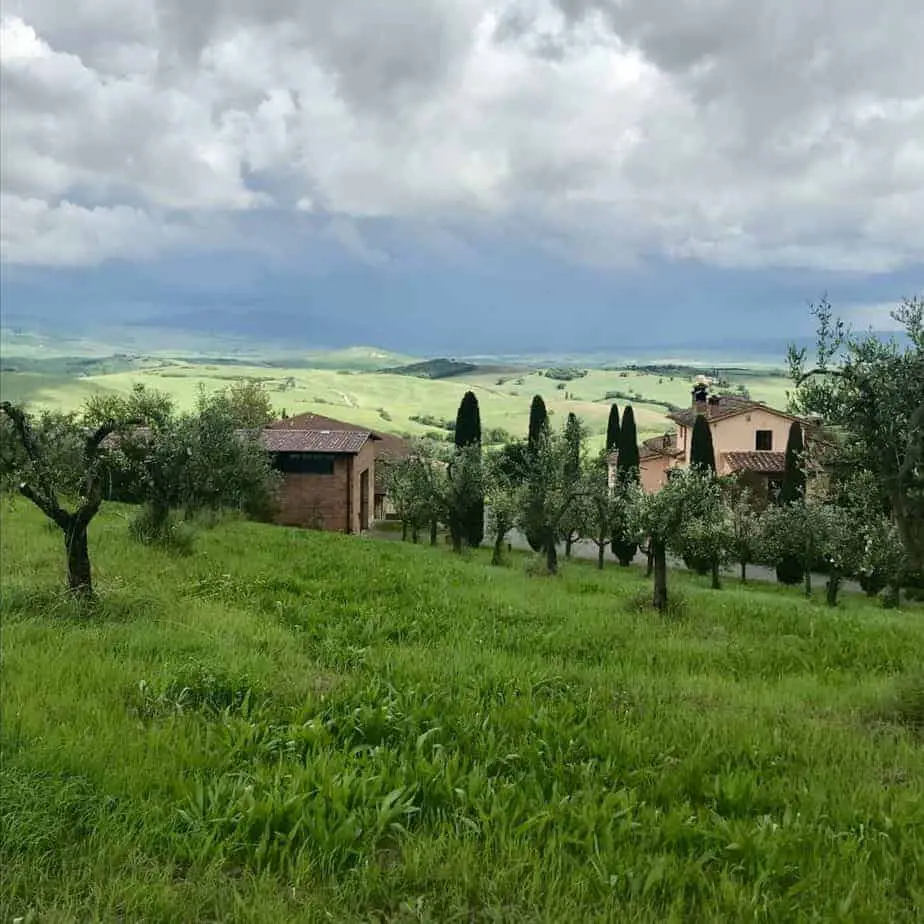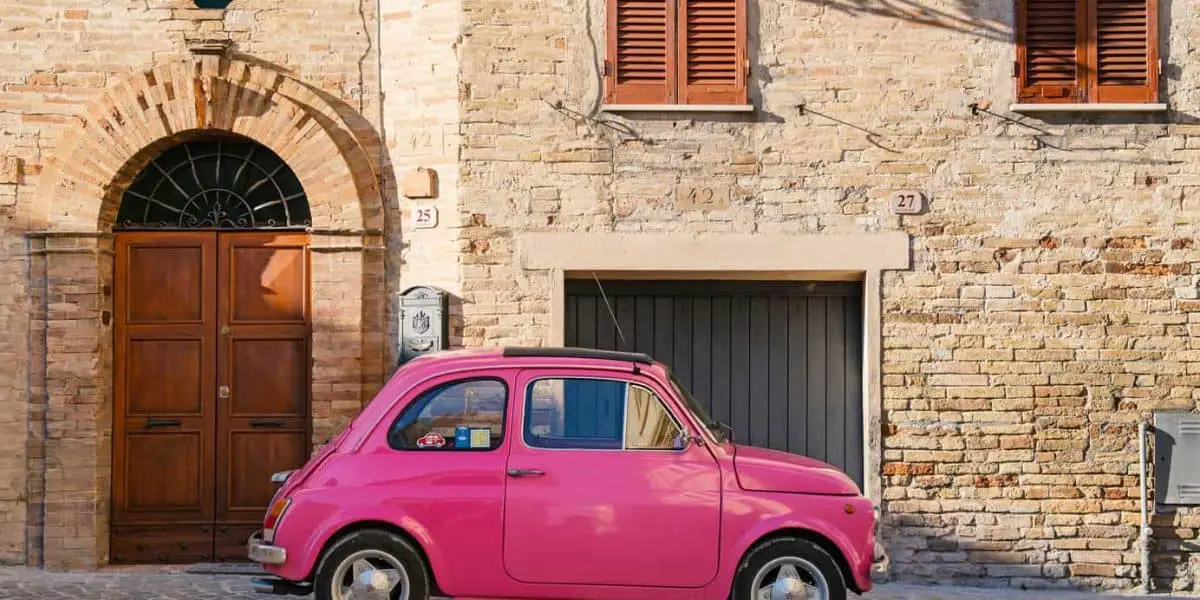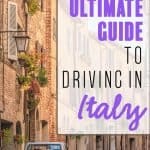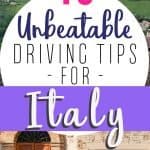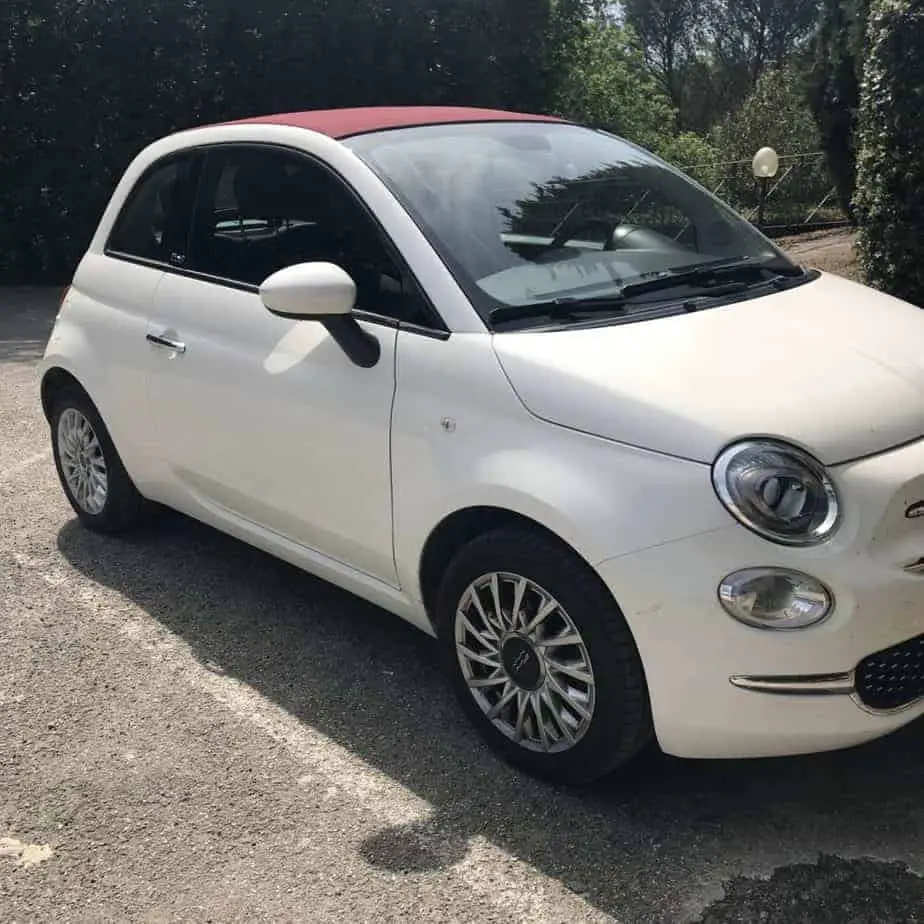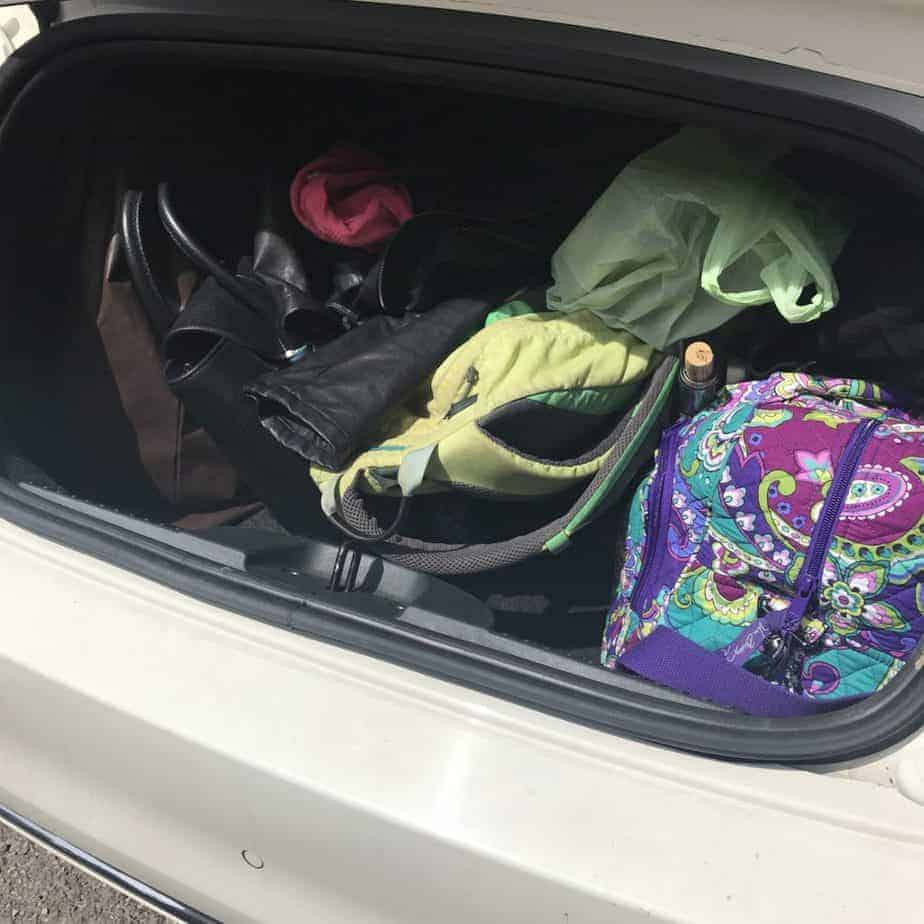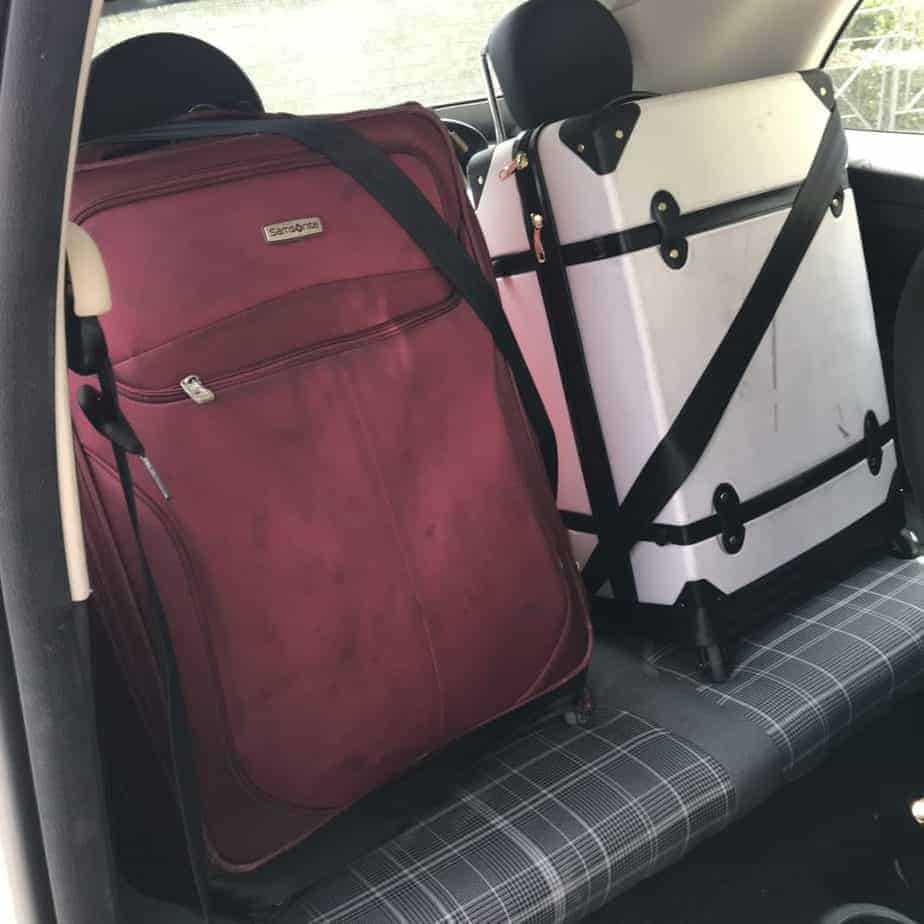Driving is the best way to experience Italy, and with these tips, driving through Italy couldn’t be easier
One thing I love about Europe is the train system. Trains really can get you just about anywhere in Europe. From exploring the city locally via a Metro system to traveling across international borders, trains are quick, efficient, and affordable.
But you’re missing out if you only experience Europe via trains.
Trains help you hit the big cities but driving gets you to the nooks and crannies. Florence is wonderful, but you won’t get your Under the Tuscan Sun experience there. You need to escape to the Italian countryside – the lush green countryside, the hilltop towns, and the broken English – to really experience that charm.
To experience this, you really need to drive – which is why I think driving is the best way to experience Italy.
I’ve been to Italy three times and I’ve driven each time. Driving in a foreign country sounds terrifying but it’s honestly not too bad. In fact, I drove alone this last visit when I stayed in Montepulciano to study Italian at Il Sasso. If I can drive in Italy as a 20-something solo female traveler, trust me, you can drive in Italy, too
From these three trips, here are all my tips for driving in Italy that all first-time visitors need. With these tips for driving in Italy, you’re sure to have a wonderful trip!
Please note: this post may contain affiliate links. What that means is, if you click on a link and make a purchase, I may make a commission at no additional cost to you. For more information, please see my Affiliate Disclosure.
1. Which side of the road do you drive on in Italy?
In Italy, you drive on the right hand side of the road. Just like in US (and most of the world!).
2. What are road signs like in Italy?
Road signs in Italy are pretty similar to road signs in the US. Most road signs are images so you don’t really need to read Italian to understand the signs.
3. Is it possible to drive in Italy with an American driver’s license?
Yes, but you will also need an International Driving Permit.
This is basically a driver’s license translated into a lot of different languages. It helps breach the language barrier in the event you’re pulled over. Honestly, I think it’s mostly just a formality – I’ve never had to use mine. Head over to your local AAA and they will get you set up. Fill out a quick application, get a photo taken, and pay the fee and you’ll be good to go.
There is no special test to take. Holding an American driver’s license makes you road-qualified in Italy. The IDP is a formality.
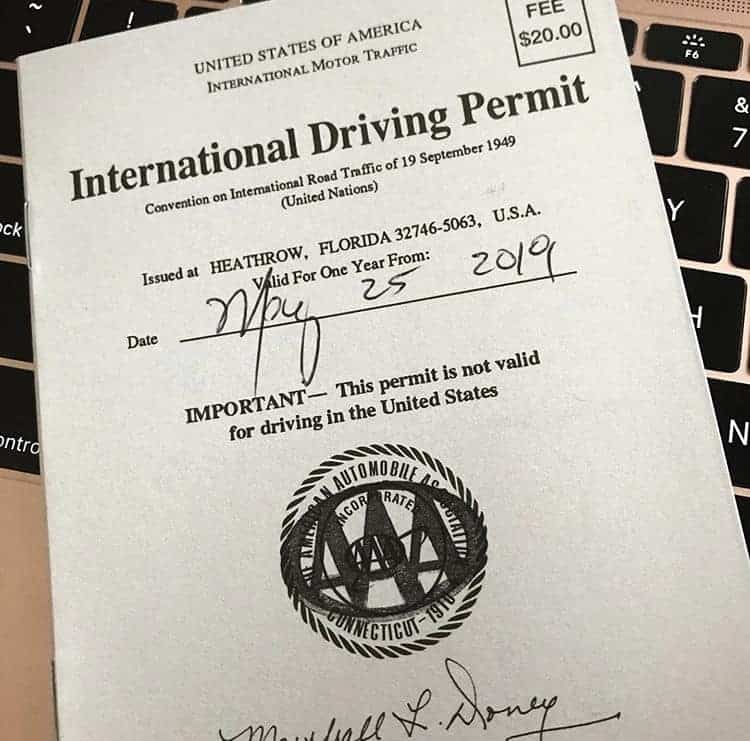
4. Can I rent an automatic car in Italy?
If you’re renting a car, it will be a manual (stick-shift) by default unless you upgrade. If you don’t pre-pay (i.e., upgrade online and pay ahead of time), there’s a chance that they will not have an automatic available for you when you arrive. Manuals are the standard (ha… pun intended) in Italy, so DEFINITELY prepare ahead of time if you cannot drive a stick shift.
On that note… if you are renting a manual, it can be surprisingly difficult to shift the car into reverse. When you go to shift into reverse, you’ll have to pull up on the shifter knob before you pop the gear into reverse. If you don’t lift the knob up, the transmission won’t engage in reverse and you’ll get stuck in a parking spot (which I have done… my limited Italian didn’t prepare me for that situation.)
5. How small are the rental cars in Italy?
Cars in Italy are much smaller than American vehicles. A Honda Civic or a Ford Focus, for instance, would look pretty large on the road in Italy.
What does that mean for you practically?
A Fiat 500 isn’t going to work if you’re traveling with four people and four checked bags. When I visited with a friend in 2018, we rented a Fiat 500 Cabrio convertible. Our backseat was taken up with our luggage and our “trunk” was filled with purses and other carry-ons. That little car was filled to the gills and there is no way we would have been able to fit a third person, let alone a fourth.
6. Is it worth it to upgrade rental car collision coverage in Italy?
Check your credit card before you leave and understand what your rental coverage is. When in doubt, it may be worthwhile to splurge on the higher-end rental coverage. When I took my language class at Il Sasso, at least two of my classmates had been in accidents. Two! They just got backed into in some small parking lots, but still. I had a number of situations where I was secretly glad I had the higher coverage, even if I didn’t use it.
Check that your credit card covers primary collision coverage. This means the credit card company pays the bill instead of your personal automobile insurance. Call before you go so you can make an informed decision!
7. Is it difficult to return a rental car in Italy?
You would think Rome has a 24/7 type of airport, but unfortunately, I discovered that’s not quite true. When trying to return our rental at 3am the day of departure, we were unable to get the car into the parking garage. The garage was double-gated and security wasn’t very helpful. My friend snuck by the gates to try and get some help… the Italian police were called … eesh. Good rule of thumb: just return it during daylight hours because then you know the garage will be available and staffed.
8. Pre-plan your GPS before driving in Italy.
The rental counter will offer you a GPS device for something like 14 euro a day. Total rip-off! You’re better off just paying your home carrier $10 a day to have unlimited international data (cheaper, AND you get to use your phone with no hindrance). If that’s too steep, check out my post on staying connected abroad to understand what other options you have.
9. Why does my car automatically shut off in Italy?
If you’re stopped for relatively long periods of time the engine may shut itself off. Don’t be surprised – it’s a way Europe helps manage emissions. The car will start itself back up when you give it some gas!
10. Are there tolls in Italy?
Yes, the autostrade (main highways) tend to be toll roads.
The toll roads are like 95% easy. My first time in Italy, however, we made a big mistake: we followed the rest of traffic through the TELEPASS lane, and continued our merry little way down the road. A couple hours later, we went to exit the highway and had no pass, no language skills, and a very frazzled toll attendant. Oops.
Don’t do that. The “TELEPASS” lanes are for automated tolling. It’s like the EZ-TAG in Houston: your TELEPASS is detected and your account automatically debited. No, you as a tourist need to go through the manual lane.
When entering a toll road, just go through any non-TELEPASS lane and accept your ticket. DO NOT lose this! And don’t mix it up with any other tickets you’ve taken. Keep it safe for when you exit the Autostrade.
When you go to exit, there will be a bunch of lanes. Again, ignore the TELEPASS lane. If you are paying with a credit card, go through the lane that has a credit card symbol. A machine will speak rapid, robotic Italian at you. Enter your ticket, follow the on-screen prompts, enter your card, and leave when the gate opens.
If you’re paying with cash, go through the lane marked with bills and coins. These lanes are usually manned so you can get assistance if you’re confused. Some lanes accept both credit cards and cash, so I recommend going that route your first time, just in case.
On that note, I recommend you get cash at the airport before continuing on your Italian airport adventure. Find out cash tips (and more!) here.
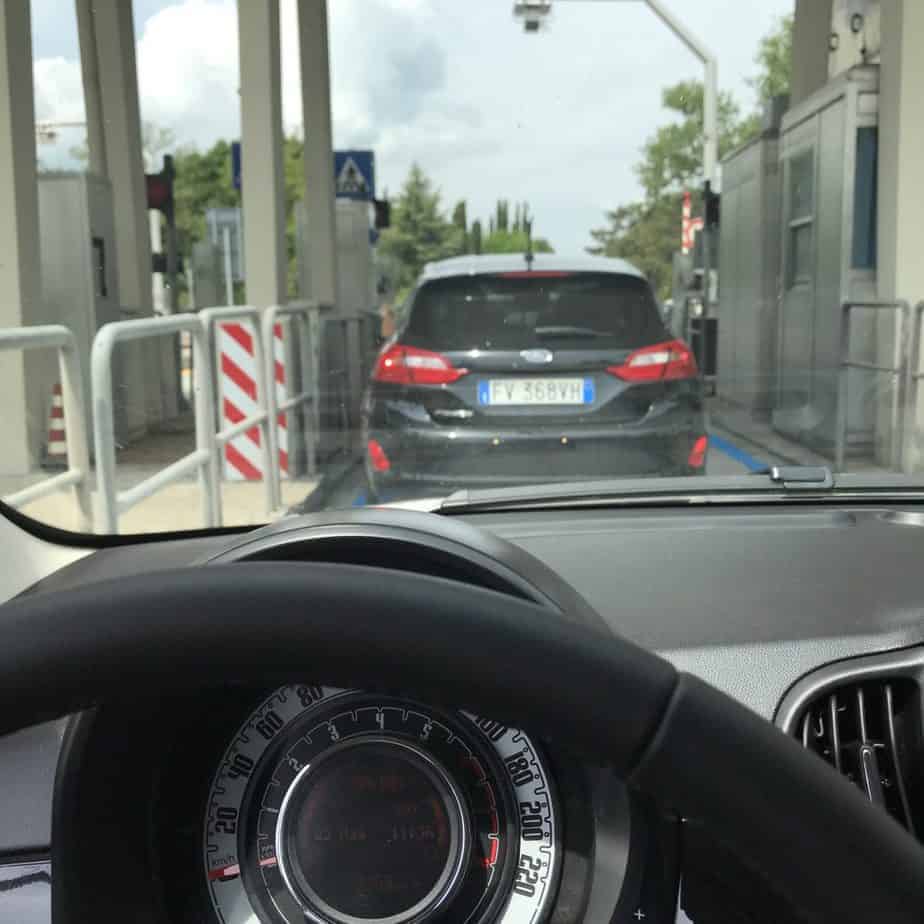
11. How hard is highway driving in Italy?
It’s really pretty easy.
Seriously. Italian highways are just like American highways. If you are able to stay mostly on the highways, you’ll have no issues driving in Italy.
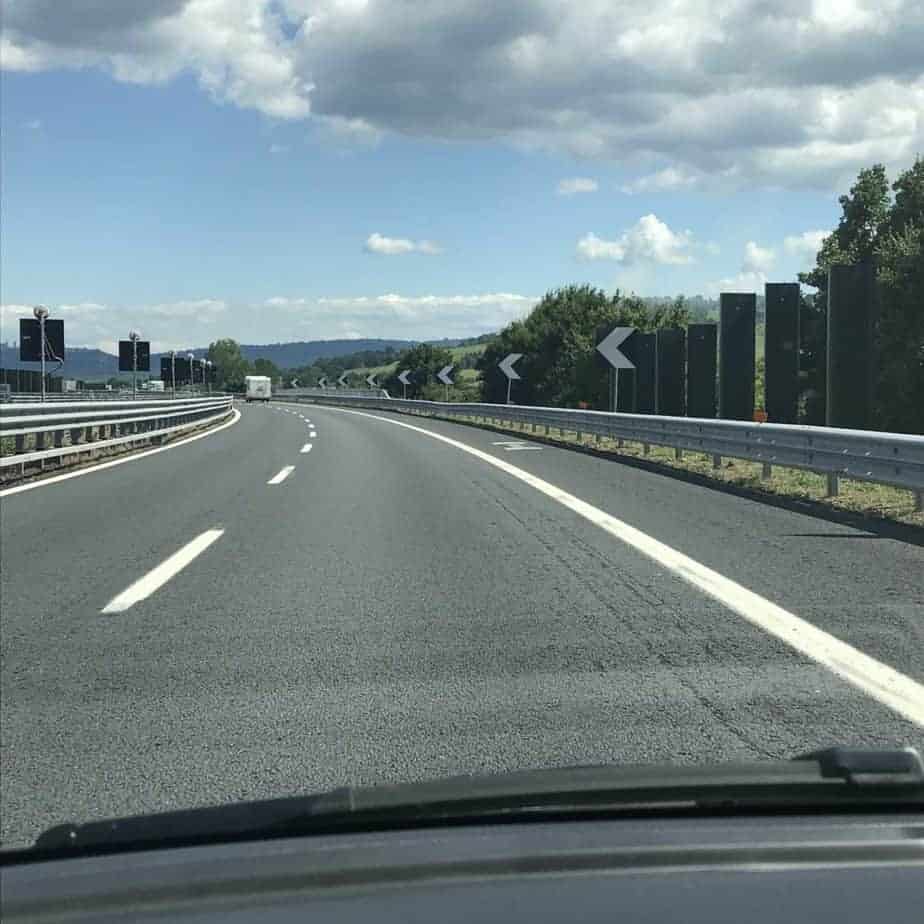
12. What are the speed limits on Italian roadways?
Speed limits aren’t always posted frequently on Italian roads.
Just in case that’s your experience, the speed limits (generally) are:
- 130 kmph on major highways.
- 110 kmph on non-major highways.
- 90 kmph on local roads.
- 50 kmph on urban roads.
13. Do Italians drive differently than Americans?
There are some cultural quirks that you’ll notice when you’re driving in Italy. They aren’t bad or good, just little things to pay attention to when you’re on the road.
- Italians like to straddle the line. I don’t really get it – maybe it’s to keep them from getting passed
- They will also approach you from behind VERY QUICKLY and then change lanes. It stressed my friend out when we traveled together, so don’t be surprised if it happens to you.
- Italians also like to speed. And they’ll get irritated if you get in the way of them speeding.
- If they’re annoyed with you, they’ll flash their headlights or turn their blinkers on to tell you to get out of the way. A cop even did that to me once!
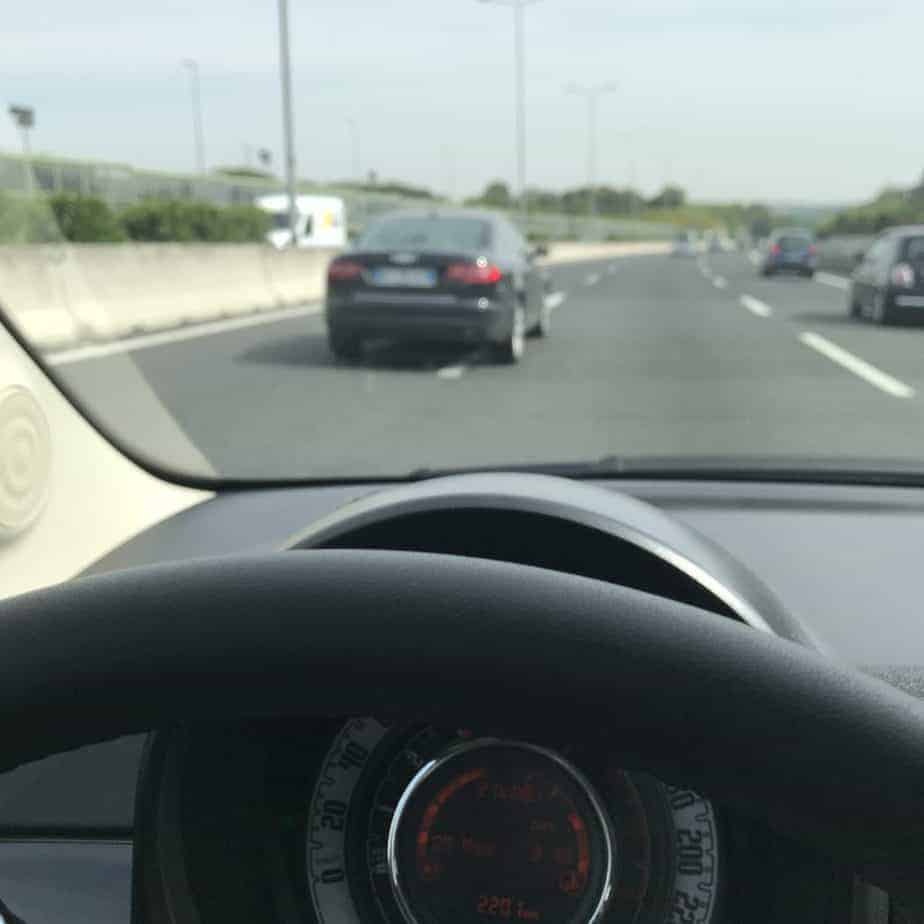
14. Are there convenience stores in Italy?
If you’re on the autostrade (toll road), it’s super easy to find a convenience store. You’ll come across one probably every half hour or so. These things are magical – ample parking, gas pumps, snacks, drinks, a sandwich & coffee bar, and nice restrooms. If you’re hungry, pull over to one of these and get some snacks. The coffee & sandwich bar follows the standard Italian coffee bar etiquette, which has its own nuance. It’s a great place to fill up, use the restroom, grab a snack, and take a driving break.
15. Are there speed traps in Italy?
There will be little signs just before the Autovelox or Safety Tutor alerting you to their presence. It’ll be a blue sign with an image of a cop holding his hands up, and these little boxes measure your speed and can send you a speeding ticket months after you get home.
Just don’t speed!
16. Why are Italian rental cars so tiny?
Remember how I said above that the cars are small and don’t fit much? There’s a reason the cars are small. I’ve only visited Umbria and Tuscany but both regions are famous for their hilltop towns. Some of the towns have adequate roads but some have tiny little bike lanes pretending to be roads.
My friend and I decided to venture to Cortona to see the house in Under the Tuscan Sun. This was fine and dandy until we went to return to the hotel. There were lanes that had literal inches of clearance from our tiny Fiat and there were turns that required 4 or 5 point turns. Very stressful. This is why higher insurance is valuable.
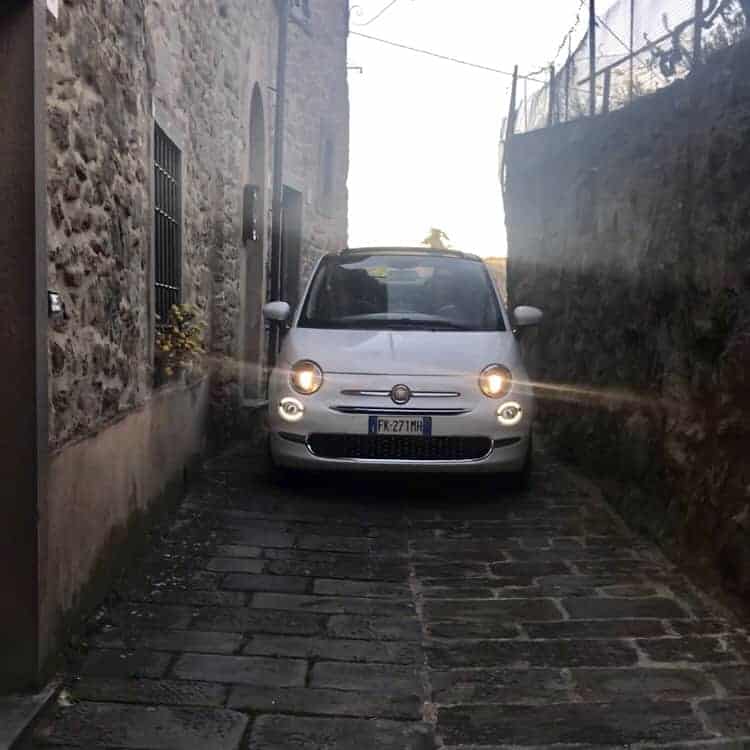
Tip 5 may have you thinking that you should upgrade to a larger car before exploring Italy, but I would recommend against that. We were thankful to have our tiny little Fiat 500 more often than not. Stick to the smaller end of cars, pack lighter, and maybe rent two cars if your party is large.
17. What is a ZTL?
A ZTL is a zona a traffico limitato, which is a limited traffic area.
ZTLs are designed to limit traffic in the historic centers of cities. You should NEVER enter a ZTL unless your hotel tells you it’s ok. Even if they tell you it’s ok, it’s very important to provide them with your vehicle information (make, model, & license plate number) so that it can be registered with the local police. But generally speaking, avoid entering a ZTL at all costs. Stop, turn around, and annoy the locals if need be – every entrance into a ZTL will incur a fine. This is what the signs look like. They are very well marked!
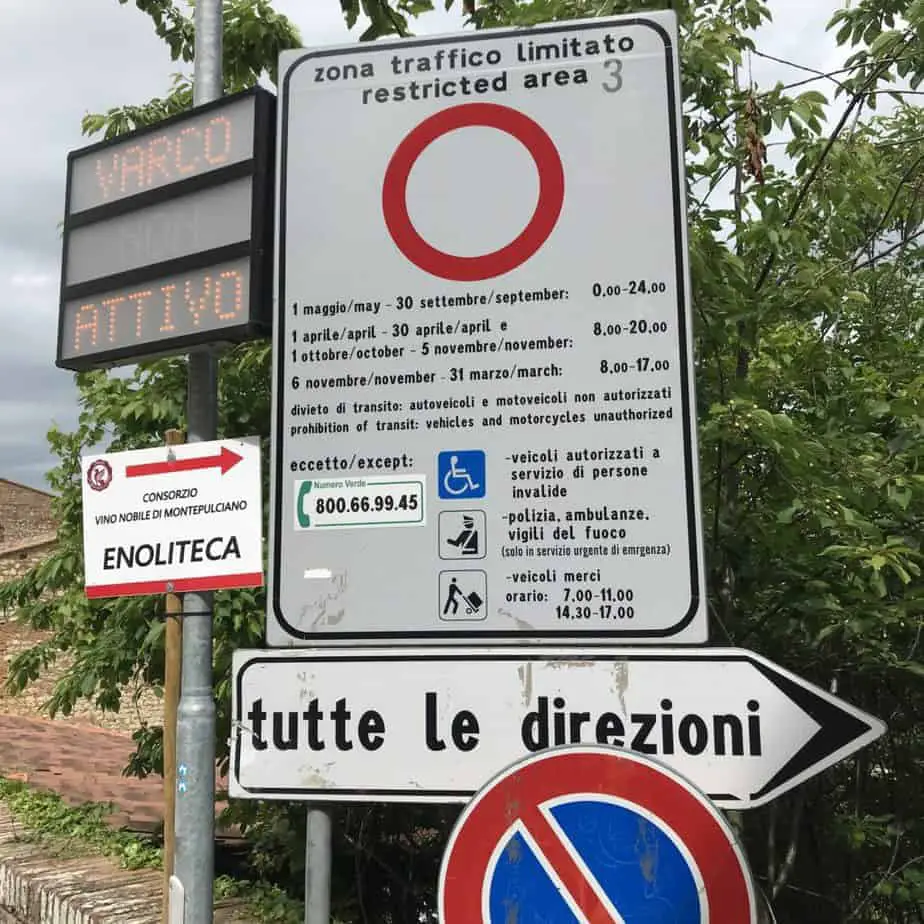
18. How do you get gas in Italy?
Getting gas in Italy is actually pretty complicated. These are probably the two most important tips for driving in Italy.
Tip 1: the gas station may be self serve or it may be serviced with an attendant.
The self serve will have a central machine that you pay at after selecting the correct gas pump. These accept credit cards in theory but my card was never accepted. Moral of the story: you need cash.
The attended gas stations should accept cards, as well, but this never seemed to work for me. Again, moral of the story: you need cash. I almost ran out of gas because I was running so low on cash and I couldn’t find a station that would accept a credit or debit card. Don’t make the same mistake as me!
Tip 2 – and most important – it is VERY EASY to put the wrong kind of fuel in your vehicle.
BENZINA is GAS. If your car is NOT a diesel, it needs BENZINA.
GASOLIO is DIESEL. If your car is a DIESEL, fill it with GASOLIO.
See how that’s confusing? It’s basically backwards from the American naming convention. To add more confusion – the BENZINA typically has a green pump (much like diesel in the US). For this reason, the attended gas stations are nice… they won’t screw it up.
These tips for driving in Italy are must-haves for everyone traveling to Italy for the first time
Please don’t let this list intimidate you. I had companions the first two times I drove in Italy but I was completely alone for my most recent trip. I promise you, it is not only doable but also quite enjoyable. You can only really enjoy the Italian countryside by car … so take the leap.
Umbria and Montepulciano are wonderful areas to visit by car. If you want a true Italian experience, I always recommend studying Italian in Italy!
